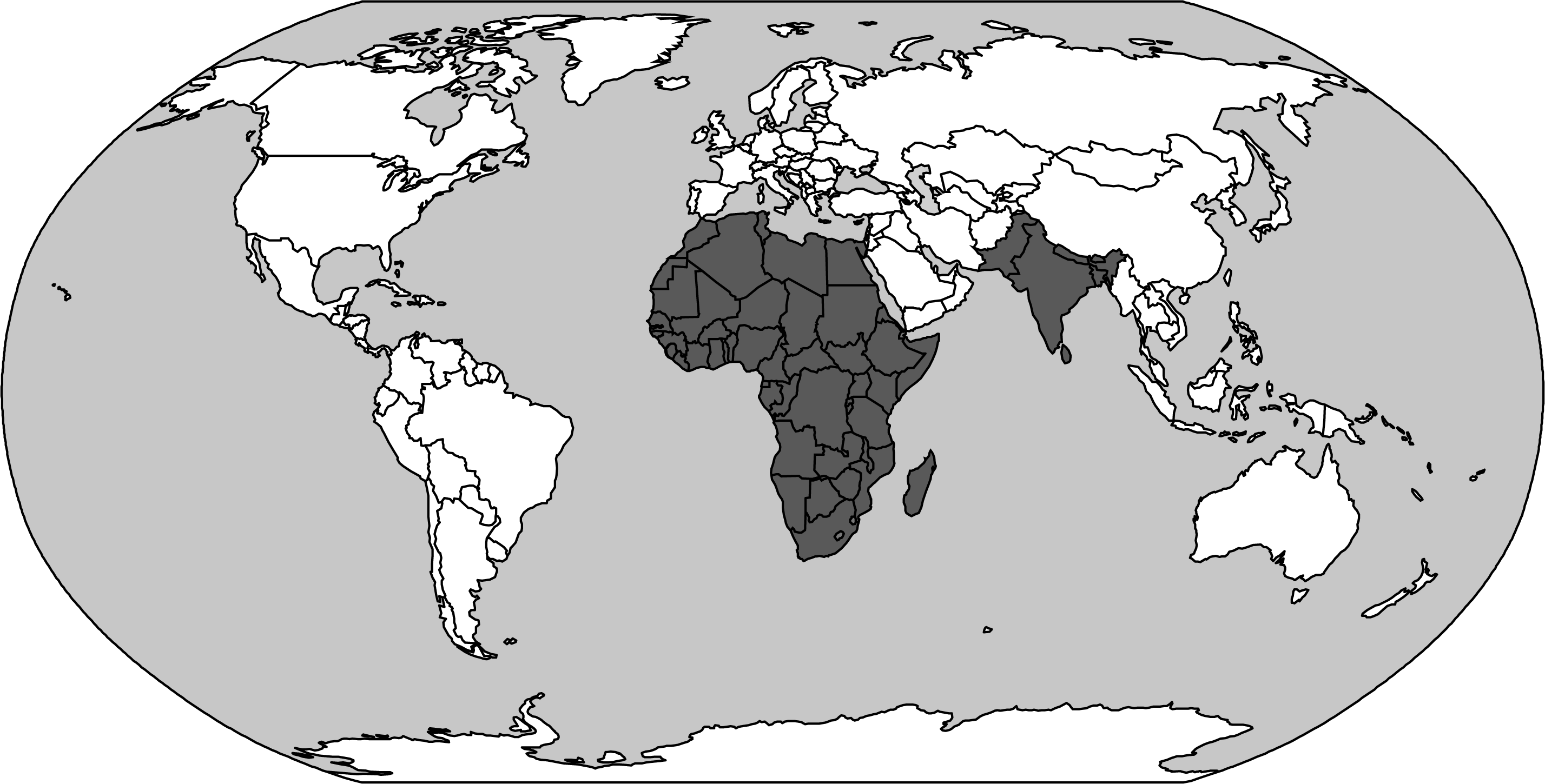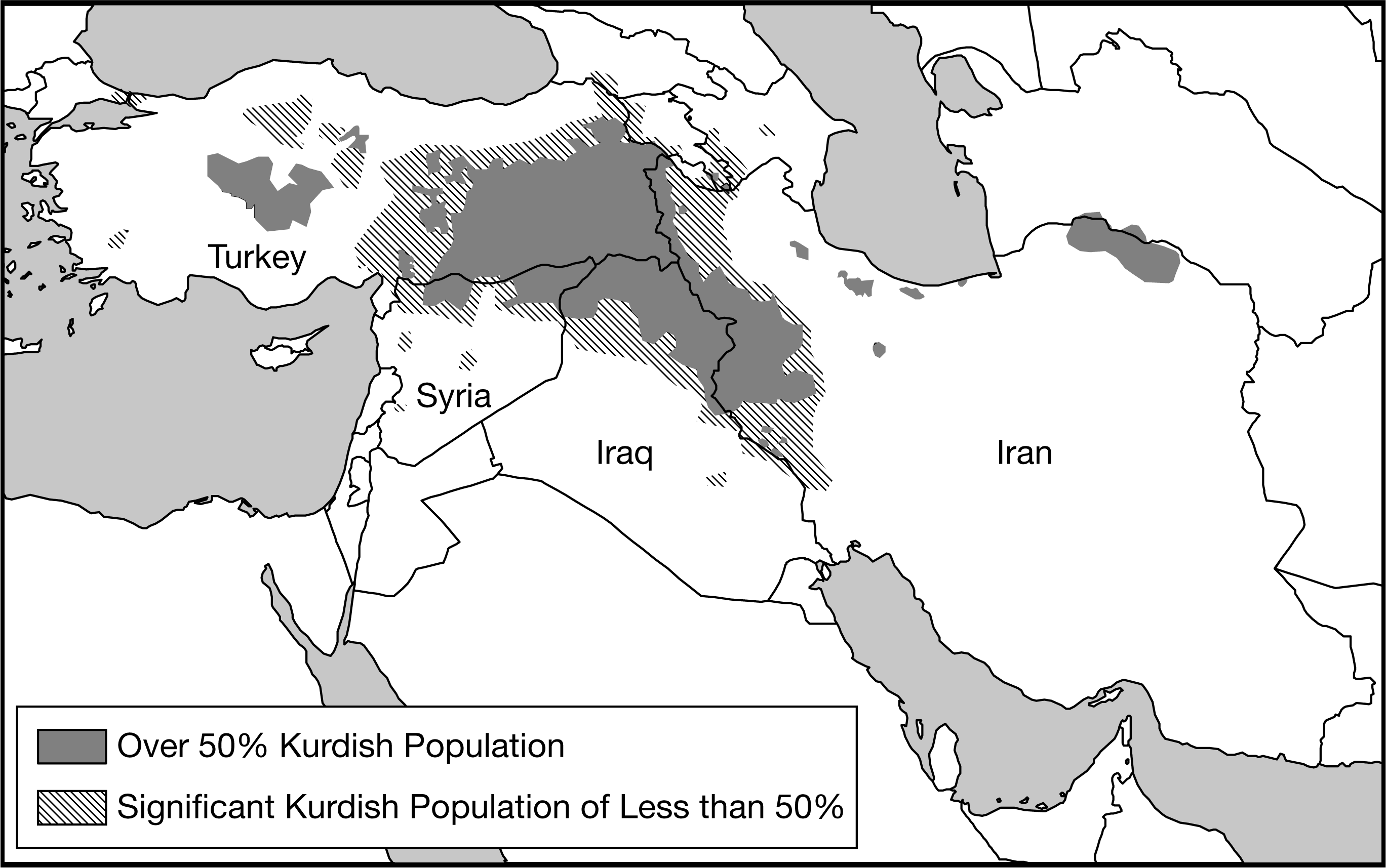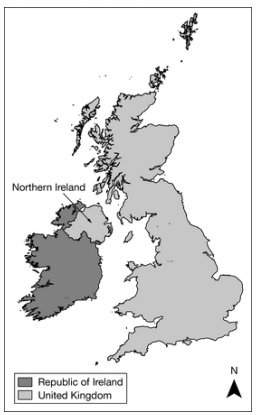ap human geo unit 4
1/20
There's no tags or description
Looks like no tags are added yet.
Name | Mastery | Learn | Test | Matching | Spaced |
|---|
No study sessions yet.
21 Terms
Which of the following correctly compares the impact of centripetal forces at the local scale with the impact of centripetal forces at the national scale?
A
Centripetal forces may cause uneven development at the local scale but not at the national scale.
B
Centripetal forces at both the local scale and the national scale may lead to increased cultural cohesion.
C
Centripetal forces may lead to stateless nations at the national scale but not the local scale.
D
Centripetal forces may result in nationalism at the local scale but not at the national scale.
E
Centripetal forces at both the local scale and the national scale may lead to failed states.
B
Which of the following groups represents a nation without a state?
A
Kurds
B
Israelis
C
Turks
D
Germans
E
Albanians
A
The Canadian government created the new territory of Nunavut in order to
A
re-create the pre-1912 boundary of Quebec
B
recognize the territorial rights of indigenous people in the area
C
facilitate the exploration of mineral resources in the Northwest Territories
D
grant autonomy to the Cree and Mohawk people living in eastern Canada
E
guarantee Canadian fishing rights in the Atlantic Ocean
B
Which of the following best explains why the region of Catalonia in Spain could be a viable country?
A
Catalonia is linguistically distinct compared to other regions in Spain.
B
Catalonia is well developed economically compared to other regions in Spain.
C
Catalonia's population is ethnically distinct compared to other regions in Spain.
D
Catalonia has a large population compared to other regions in Spain.
E
Catalonia has a major city, Barcelona, which has a notoriety comparable to that of the Spanish capital, Madrid.
B
Based on the data in the table, which of the following is a possible impact of ethnic and religious diversity in Iraq?
A
Ethnicity and religion act as centripetal forces in the country by creating a common Iraqi identity among the population.
B
Ethnicity and religion facilitate democratization in the country by motivating participation in elections.
C
Ethnicity and religion promote economic development in the country by generating national pride in the country’s accomplishments.
D
Ethnicity and religion lead to devolutionary pressures in the country by politically dividing regions.
E
Ethnicity and religion increase cultural cohesion in the country by promoting shared political ideology.
D

The Berlin Conference of 1884–1885 and the partition of India in 1947 changed borders in Africa and South Asia and are reflected in the current world map. Which of the following best describes the type of political border resulting from these events?
A
Relict boundaries
B
Antecedent boundaries
C
Consequent boundaries
D
Superimposed boundaries
E
Subsequent boundaries
D

The shape of North Carolina’s Twelfth Congressional District, shown above, is most likely the result of
A
watershed boundaries
B
gerrymandering
C
county boundaries
D
decentralization
E
amalgamation
B
Which of the following is an example of a shatterbelt region?
A
Eastern Europe
B
Western Europe
C
Siberia
D
South America
E
Southern Africa
A


Examining the countries shown in white on the map of the former Yugoslavia, which of the following explains why the area would be referred to as a shatterbelt region?
A
The countries comprise a strategically positioned area and have unstable national governments.
B
The countries have an open-border policy and have abolished all passport and customs controls along their shared political boundaries.
C
The countries comprise a multiethnic culture region and have strong federal governments.
D
The countries are outside of the European Union but are inside of the European continent.
E
The countries are former communist states and remain allied with the Russia.
A

Based on the information in the map, what is the most likely outcome of the possible establishment of an independent Kurdistan for the Kurdish people?
A
The state of Turkey, seeking to connect areas with a substantial Kurdish population into an independent state, might take action against neighboring states.
B
The Kurdish people, seeking a state of their own with a majority Kurdish population, might secede from or rebel against the states labeled on the map.
C
The Kurdish people would have to migrate into a single country to gain a population majority and would struggle for control of the government.
D
In areas with a Kurdish majority population, Kurdish people are politically active among Turks, Iranians, Iraqis, and Syrians and would be able to win an election on a national vote to secede.
E
The countries shown on the map will cooperate and work together to address the political situation and needs of people in areas with a substantial Kurdish population.
B
United Nations recognition of a state's "exclusive economic zone" allows the state to
A
establish economic free trade zones within the sovereign territory of other states
B
claim national economic jurisdiction over 200 nautical miles of water extending from its coast
C
limit importation of competitive goods and services from other countries
D
protect domestic production by imposing tariffs on all foreign-made products
E
form limited economic alliances with other countries
B
Which of the following explains why Korea and Vietnam were viewed as shatterbelts during the Cold War?
A
Korea and Vietnam were politically controlled by regional powers.
B
Korea and Vietnam kept two political adversaries geographically separated.
C
Korea and Vietnam fragmented into new states due to internal tensions.
D
Korea and Vietnam tried to control land and sea areas around their states.
E
Korea and Vietnam experienced conflict due to a dispute between global powers.
E
Historically, Iceland had only one period of human migration. The country has never been invaded and possesses a common culture and language. As a result, Iceland is regarded as a good example of which of the following concepts?
A
Absolute monarchy
B
Theocracy
C
Constitutional monarchy
D
Nation-state
E
Exclave
D
The United Nations Convention on the Law of the Sea sets the limit of the exclusive economic zone at 200 nautical miles from a country’s coastline. In cases where countries are less than 400 nautical miles apart at sea, which of the following explains how the exclusive economic zone boundary is determined for each country?
A
Both countries will state their case to the United Nations during a hearing of the Security Council.
B
Both countries will follow the median-line principle.
C
Both countries will share all of the water area.
D
Neither country can claim the area as an exclusive economic zone because the area is considered international water.
E
Both countries will receive increased territorial sea claims up to 24 nautical miles but will have no exclusive economic zone.
B
Which of the following is an example of Balkanization?
A
Greece
B
Hungary
C
Albania
D
Yugoslavia
E
Romania
D
Which of the following describes a federal form of governance?
A
A centralized government creates a barrier to local participation in the political process.
B
Autonomous regions act outside the authority of a central government.
C
Federal states encourage devolutionary movements and break apart quickly.
D
Laws are enacted in a single language to promote cultural unity.
E
Multiple substates have local control and are unified to pursue common goals at the national level.
E
Some territories within the Russian Federation are characterized by concentrated populations of ethnic groups and these areas function as autonomous republics. Which of the following best explains the political relationship between the autonomous republics and the central government of Russia?
A
The central government of Russia exerts complete control over the autonomous republics to counteract the devolutionary pressures
B
The autonomous republics are able to function independently from the central government because of an abundance of natural resources
C
Russia is a multistate nation characterized by contested regional boundaries
D
The autonomous republics provide ethnic groups with some political control over their homelands while preserving Russia’s territorial integrity
E
Russia is a unitary state characterized by many ethnic groups united within a single country
D
The population counts shown in the below tables would most likely be used for which of the following purposes?
STATE POPULATIONS, 2010 DECENNIAL CENSUS MULTIPLE-SEAT STATES
SINGLE-SEAT STATES
A
The reapportionment and redistricting of the US Senate that occurs every 10 years
B
The reapportionment and redistricting of the US House of Representatives that occurs every 10 years
C
The redistricting of the electoral college that occurs every 10 years
D
The reapportionment of the US Congress when members of Congress change their political party affiliation
E
The reapportionment of the US Congress when members of Congress move from one state to another
B
What condition occurs when the people of one state want to annex a territory whose population is ethnically related to that state’s population but now under the rule of another state?
A
nationalism
B
resource dispute
C
irredentism
D
positional dispute
E
functional dispute
C
Which of the following describes typical characteristics of federal states?
A
a centralized government and strong centripetal forces
B
a fragmented land area and a single ethnic group
C
a small land area and high population density
D
A compact shape and a primate city
E
a large land area and multiple ethnic groups
E
Based on the map, which of the following can be identified as a true statement about Northern Ireland?

A
it is united with the rest of the island to form a sovereign nation-state
B
it forms its own sovereign nation state predominantly made up of the Irish ethnic group
C
It is a frontier that is not formally part of a state, but the UK claims the area
D
it is physically separate from the rest of the UK, a multinational state
E
it is a stateless nation, as the entire island of Ireland is under the control of the UK
D